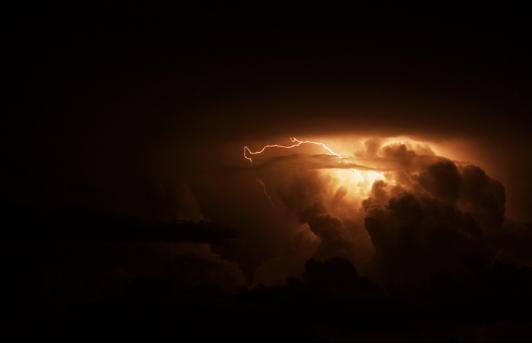February 1, 2024: Southern California Prepares for Intense Storm System
Southern California is on alert as forecasters predict a formidable storm system poised to affect the area starting today. The National Weather Service has issued notifications for heavy downpours, powerful winds, and possible flooding, especially in regions recently impacted by wildfires. Residents in Los Angeles, Ventura, and Santa Barbara counties are encouraged to brace for extreme weather conditions that may result in dangerous travel and localized power outages.
The impending storm is anticipated to deliver precipitation rates surpassing one inch per hour in some locations, heightening worries about flash floods and mudslides, particularly in burn scar zones. Emergency services are on standby, and officials have recommended residents to secure outdoor belongings, refrain from non-essential travel, and remain updated through local news sources. Sandbag distribution sites have been set up in at-risk communities to assist in reducing potential flood damage.
This meteorological occurrence is part of a succession of atmospheric river systems affecting the West Coast, often known as “Pineapple Express” storms due to their source near Hawaii. Such systems can carry substantial quantities of moisture, resulting in severe and extended rainfall. Authorities underscore the necessity of readiness and prudence during this spell of adverse weather.
Overview of the Upcoming Storm System
As February 1, 2024, approaches, Southern California is gearing up for a powerful storm system that is anticipated to sweep through the region. Weather forecasts indicate that this storm could bring with it significant rainfall, strong winds, and the potential for localized flooding. Residents are advised to prepare for various weather-related impacts and to stay informed through reliable channels.
Forecast Predictions
The National Weather Service has issued warnings and advisories ahead of the impending storm, noting that rainfall amounts could reach several inches in some areas, particularly in the mountainous regions and foothills. The storm’s trajectory is expected to lead to heavy precipitation, with predictions suggesting a mix of rain at lower elevations and snow at higher altitudes. Meteorologists are closely monitoring the storm as it approaches, providing updates on its intensity and duration.
Wind and Flooding Risks
In addition to heavy rain, the storm is forecasted to produce strong winds that could exacerbate localized flooding and lead to downed trees and power outages. Wind gusts may reach up to 50 mph in exposed areas, posing risks to infrastructure and safety. Residents in flood-prone areas are urged to take precautions and have contingency plans in place to respond to potential emergencies.
Impact on Travel and Transportation
The storm system is expected to significantly impact travel conditions across Southern California. Motorists are advised to exercise caution, particularly on roadways known to be susceptible to flooding and mudslides. Airline travel may also be affected, as airlines could preemptively cancel or delay flights due to severe weather conditions. Travelers are recommended to check flight statuses prior to heading to airports and to prioritize safety on the roads.
Community Preparedness
In anticipation of the storm, local authorities and emergency management agencies are taking proactive measures to ensure public safety. Communities are being encouraged to secure loose outdoor items that could be blown away in the wind and to stockpile essential supplies such as food, water, batteries, and medications. Residents should familiarize themselves with evacuation routes and emergency contact information in case of rapid changes in the weather.
Wildfire Concerns
The arrival of substantial rainfall may bring some relief to areas previously affected by wildfires, but it also raises concerns about mudslides and debris flows in burn scar regions. The combination of saturated soil and potential landslides poses risks to both life and property in these vulnerable zones. Residents in affected areas are advised to remain vigilant and heed any evacuation orders issued by local authorities.
Conclusion: Staying Informed and Prepared
The impending storm set to impact Southern California on February 1, 2024, brings both challenges and opportunities for residents throughout the region. By remaining informed about the evolving weather conditions, taking appropriate safety measures, and preparing for emergencies, individuals can mitigate potential risks associated with the storm. As communities rally to support one another, ensuring the safety of all residents is a shared responsibility that will foster resilience during challenging times.
FAQs
What should I do to prepare for the storm?
Ensure you have enough food, water, medications, and other essential supplies for several days. Secure outdoor items that might be blown away in high winds, and familiarize yourself with local evacuation routes and emergency contacts.
How is the storm expected to impact travel?
Travel may be significantly affected due to heavy rainfall and strong winds, impacting road conditions and flights. It is advisable to check traffic conditions and flight statuses before traveling.
Are there any specific areas more at risk from the storm?
Mountainous regions and areas that have been affected by recent wildfires are particularly at risk for mudslides and debris flows. Flood-prone areas may also experience localized flooding.
Where can I get the latest updates on storm conditions?
Stay informed by following updates from the National Weather Service, local news outlets, and your local emergency management agency. Social media platforms can also serve as a source for real-time updates.
What actions should I take if I experience flooding in my area?
If you experience flooding, move to a higher ground promptly and avoid driving through flooded roads. Follow local emergency services’ guidance and stay tuned to local news for updates and safety information.

